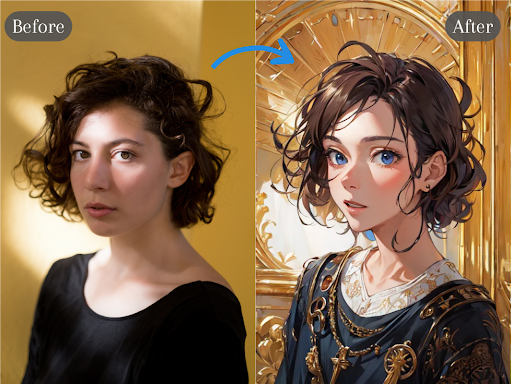In the fast-evolving world of technology, the animation industry has experienced transformative changes, particularly with the introduction of Artificial Intelligence (AI) in animation tools. Traditional animation apps have long been the backbone of the animation industry, offering creators the tools to bring imaginative concepts to life through frame-by-frame manipulation. However, the rise of AI-driven animation apps has begun to shift the paradigm, introducing new capabilities and changing the landscape of possibilities in animation. This article explores the pros and cons of an AI face animation app compared to a traditional animation app, providing a balanced perspective for both amateurs and professional animators.
What is AI Face Animation?
AI face animation refers to the use of artificial intelligence technologies to create or alter animated sequences where the primary focus is on facial expressions. These apps utilize machine learning algorithms to understand facial features and expressions, then animate them in real-time or through automated processes. This technology can mimic emotions, lip-sync to audio, and produce complex facial movements that would traditionally require extensive manual effort to achieve.
AI Face Animation Apps: The New Frontier
AI face animation apps like those incorporating technologies seen in projects like Face26, leverage AI to automate the animation process, particularly for facial animations. These apps use facial recognition and other machine learning algorithms to animate faces in real-time or from pre-recorded videos.
Pros of AI Face Animation Apps:
- Efficiency: AI significantly speeds up the animation process, automatically creating animations from facial cues within videos or in real-time.
- Accessibility: These apps tend to be more user-friendly, making it easier for hobbyists and professionals alike to create quality animations without extensive training.
- Innovative Features: AI can offer features like auto lip-syncing and real-time facial expression tracking, which can be invaluable for projects like virtual reality (VR) and augmented reality (AR) applications.
Cons of AI Face Animation Apps:
- Less Control: While AI apps can produce high-quality animations, they offer less manual control, which can be a limitation for projects requiring unique, highly specific animations.
- Dependence on Technology: AI-driven apps require substantial computational power and can be less reliable in situations where facial recognition is challenged by lighting, angles, or obscured faces.
- Potential for Generic Outputs: There is a risk of animations lacking uniqueness, as AI algorithms might produce similar results across different projects.
Traditional Animation Apps: A Legacy of Creativity
Traditional animation apps are software tools that require animators to manually create each frame of an animation (frame-by-frame animation). These apps have been instrumental in the development of animated films, commercials, and games. They offer a high degree of control and precision, making them the preferred choice for projects where detailed expressions and customized animations are necessary.
Pros of Traditional Animation Apps:
- Control and Precision: Animators can control every aspect of the animation process, from the twitch of an eyebrow to the movement of lips, allowing for highly detailed and expressive outcomes.
- Originality and Creativity: These tools support the animator’s creativity, enabling unique styles and expressions that are only limited by the animator’s imagination and skill.
- Professional Quality: Traditional tools are often more robust and offer professional-grade features that are essential for high-quality commercial production.
Cons of Traditional Animation Apps:
- Time-Consuming: Creating frame-by-frame animations is incredibly time-intensive, often requiring weeks or months to complete a few seconds of animation.
- Skill Requirement: High-level skills in drawing and animation principles are necessary to effectively use traditional animation software.
- Cost: Professional traditional animation software can be expensive, and learning how to use it effectively often requires formal education or extensive self-study.
Balancing Technology with Tradition
While AI apps offer efficiency and ease of use, they cannot yet match the level of detail and control provided by traditional methods. For animators seeking to create animations with complex, nuanced expressions, traditional apps are often the better choice. However, for projects requiring quick turnaround or where facial animations are standardized, an AI face animation app can provide significant advantages.
Conclusion
The choice between AI face animation apps and traditional animation apps largely depends on the specific needs of the project, the skills of the animator, and the desired outcome. Both technologies have their place in the animation industry, and a hybrid approach often yields the best results. As AI technology continues to evolve, it may close the gap with traditional methods, but for now, the art of animation benefits from the strengths of both technologies, allowing animators to choose the best tool for their creative vision.
